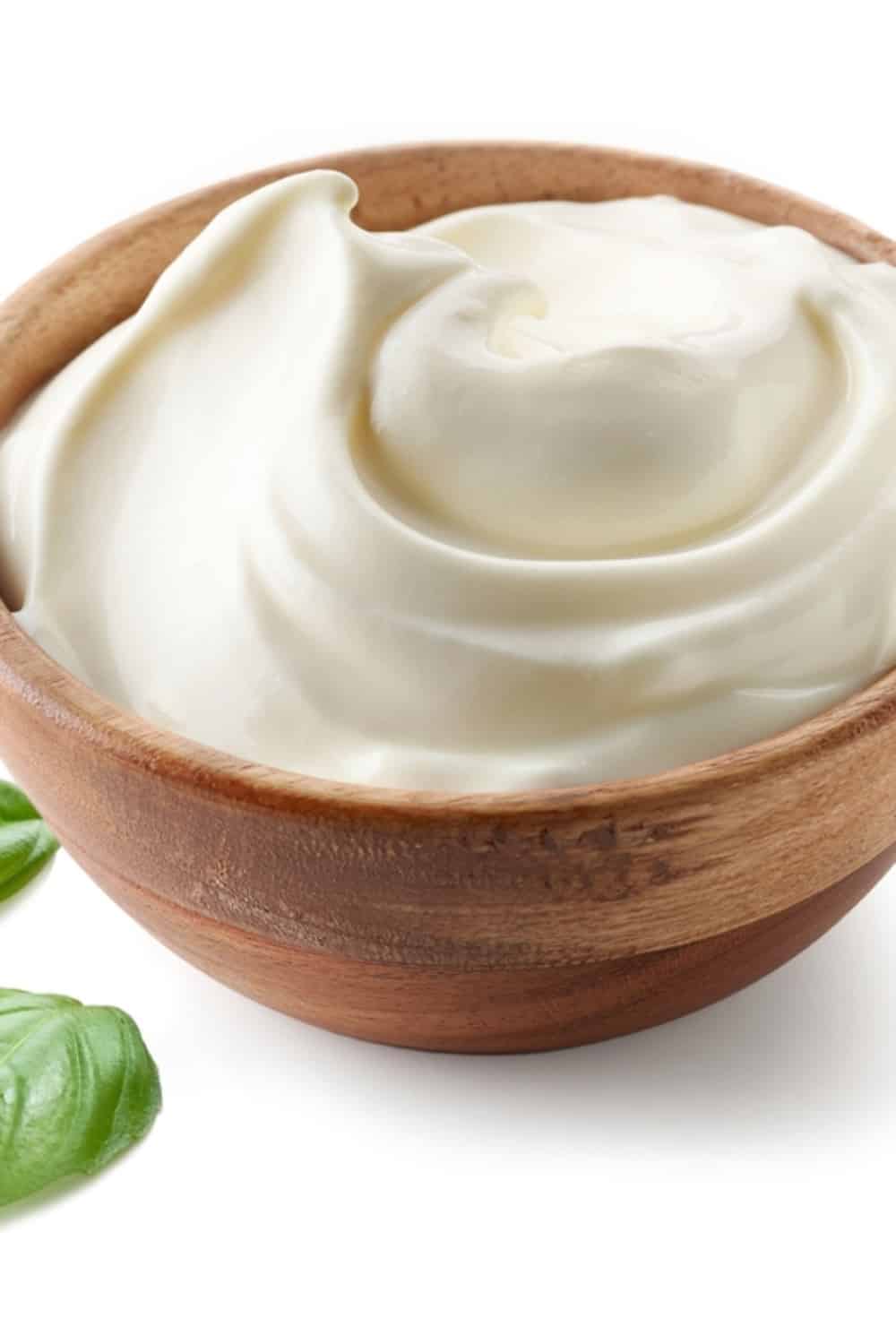Yogurt is a type of food that can be consumed in various ways and there are also various types of yogurt so that everyone can find the one that they can enjoy. This makes it very popular.
Yogurt is, however, a fermented dairy product, so it can be very sensitive to spoilage, especially if you don’t handle it properly.
So, if you have a lot of yogurt and you don’t want it to go to waste, the question of storage arises. But can you freeze yogurt to solve this problem?
Well yes, yogurt can be stored in the freezer, but you have to know how to do it properly and how it will affect its quality.
This is exactly what you will learn in this article.
Why Freeze Yogurt? (And Why Not?)

Well, the most obvious reason to freeze yogurt is to extend its shelf life.
By freezing it, you can preserve it for a longer period of time and avoid wasting it.
This can be especially helpful if you buy yogurt in bulk or if you want to stock up on a particular type of yogurt that you love.
Another reason to freeze yogurt is to make frozen yogurt treats. When frozen, yogurt takes on a new texture that is creamy and smooth, similar to ice cream.
By adding in your favorite fruits or sweeteners before freezing, you can create a delicious and healthy frozen treat that is perfect for hot summer days.
Finally, freezing yogurt can also be a great way to save money. Yogurt can be expensive, especially if you prefer to buy organic or specialty brands. By buying in bulk and freezing, you can save money in the long run.
Are There Any Negative Effects Of Freezing Yogurt?
Well, I wouldn’t say that they are negative effects, but freezing can cause some changes in the texture and flavor of your yogurt.
The most notable difference between yogurt that has and hasn’t been frozen is its texture. Namely, some types of yogurts can become thinner or grainier in texture after freezing.
Also after thawing, tiered layers may appear because freezing collapses the protein networks in yogurt. The process releases water that, when frozen, separates from the milk solids.
After reading this, you probably think that yogurt is useless after being frozen, but that is simply not true because it can be successfully used in many recipes.
When it comes to the flavor profile, there are no significant changes aside from the slightly enhanced acidic taste due to the freezing process.
Finally, many people consume yogurt due to its health benefits from the bacteria known as probiotics, so now the question of their survival in the freezer arises.
Although they do not thrive at too low temperatures, there hasn’t been any significant decline in the amount of bacteria present in the yogurt after freezing.
4 Ways To Freeze Yogurt

You now know that there are a lot of benefits of freezing yogurt and that there are no significant downsides. So there is no better reason to learn how to freeze yogurt properly and there are actually 4 methods to do that the right way.
1. Freeze It In Its Original Container
This is definitely the fastest and easiest method you can use to freeze your yogurt. If still unopened, you can put the original container directly in the freezer without any worry.
However, you have to know that it is best to freeze it this way if you bought small single-serving containers or those packs with multiple small yogurts.
Obviously, this is because once you pull them out from the freezer, you will most probably eat a whole serving and there won’t be any need for freezing it again or tossing the leftovers.
But with larger tubs it is different, because there is a lower probability that you will eat the whole serving at once, leaving leftovers unused, which is a tragedy really.
But, fortunately, one of the following methods can certainly serve in that case, so stay tuned.
2. Use a Freezer-Safe Container
As I already said, if you are dealing with a larger container, I wouldn’t recommend freezing it right away. Rather transfer it from the original container to smaller freezer-safe containers, to avoid any leftovers.
Here are the simple steps you need to follow.
STEP 1: First, prepare the containers by washing them thoroughly in order to avoid any contamination. After that, you can pour the yogurt into the containers, filling them not all the way through.
This is because yogurt contains a high amount of water, and water expands in the freezer, so you will need to leave some space on the top.
STEP 2: Seal the container properly to avoid any excess air that can lead to freezer burn.
This is also to prevent the yogurt from absorbing odors from surrounding foods which can lead to the milk spoiling faster.
STEP 3: Finally, label the container with the exact date of storage and put it in the freezer.
3. Freeze It In Scoops
If buying larger tubs, this method can be great as well. It is a more time-consuming method compared to the previous two, but it is worth it because it enables you to portion large batches of yogurt into fine small portions. So here are the steps.
STEP 1: First, line a baking sheet with parchment paper and use an ice cream scoop to portion and place the yogurt on the parchment.
STEP 2: Now, transfer that baking sheet with scoops of yogurt to the freezer and let it stay there for several hours or overnight until frozen solid.
STEP 3: After this time frame, pull the baking sheet out of the freezer and transfer the yogurt scoops to the freezer bag.
STEP 4: Finally, label the bag with the exact date of storage and put it in the freezer for long-term storage.
4. Use Ice Cube Tray Method
My last recommended method is to freeze yogurt by using an ice cube tray. This is my preferred method for freezing half and half as well, so I can use it for coffee. The steps are below.
STEP 1: First, prepare your ice cube tray by cleaning it properly to avoid any contamination or cross-contamination.
STEP 2: After that, you can freely pour the yogurt into the ice cube tray.
STEP 3: Transfer the ice cube tray with yogurt into the freezer and allow it to freeze solid for several hours or overnight.
STEP 4: After that time frame, pull the ice cube tray out of the freezer and transfer the yogurt cubes to a freezer bag for long-term storage.
STEP 5: Label the bag with the exact date of storage and put it in the freezer.
Different Types Of Yogurt And Freezing

As already stated in the introduction, there are various types of yogurt and they all go through the freezing process a bit differently. So here you will be able to learn what freezing means for a few different types of yogurt.
Freezing Regular Yogurt
Regular yogurt can be frozen, but you have to know some tips and tricks to do that successfully because it can easily become watery and lose some of its texture.
To prevent this, you can strain the yogurt before freezing. Place a cheesecloth or a coffee filter over a strainer and set it over a bowl.
Pour the yogurt into the cheesecloth and let it drain for an hour or so. Transfer the thickened yogurt into an airtight container or freezer-safe bag and freeze as per the instructions above.
Freezing Greek Yogurt
Greek yogurt freezes quite well and is more suitable for freezing than regular types of yogurt. This is because it contains less water, i.e., it has a thicker consistency which is less likely to degrade during the process.
Because Greek yogurt is thick and can hold its shape quite well, the scoop method is the best method to pursue.
However, you can also freeze Greek yogurt in a freezer-friendly container, especially because you don’t have to leave that much space at the top.
Freezing Kefir
Kefir is a slightly different type of yogurt because, unlike yogurt, it is made by adding kefir grains to milk.
However, the most important difference is in the amount of bacteria or probiotics. Namely, kefir contains a higher amount of probiotics due to the greater variety of bacterial strains it contains.
Because of that, it is more prone to losing some of its probiotic properties in the process, as well as to separate.
To prevent separation, you can mix in a thickener such as cornstarch or tapioca starch and transfer the kefir to an airtight container or freezer-safe bag and freeze as per the instructions above.
That should do the trick.
Freezing Soy Yogurt And Coconut Yogurt
Soy yogurt and coconut yogurt are great alternatives to dairy-based yogurts, especially if you have tolerance issues with dairy products.
When it comes to freezing, you can treat these types of yogurt the same way you treat dairy.
However, you have to know that, when frozen, soy or coconut yogurt tends to become slightly grainy in texture.
To prevent this, add a stabilizer such as cornstarch or agar-agar before freezing. Transfer the yogurt to an airtight container or freezer-safe bag and freeze as per the instructions above.
How Long Does Yogurt Last In The Freezer?
According to the USDA, dairy products can be frozen for up to 3 months (if stored properly). However, if you want to experience its best quality, it is better to consume it as fast as you can.
My recommendation is to avoid leaving it in the freezer for over 2 months. It won’t go bad if you leave it there for 3 months, but its flavor and especially texture will certainly deteriorate.
How To Thaw Yogurt Properly?

In most cases, it is essential to thaw yogurt after the freezing process, especially if you are planning to eat it on its own right away.
In order to do that, it is best to transfer the amount of yogurt you are planning to consume from the freezer to the fridge and leave it there overnight.
This is to make sure that it stays at an ideal cool temperature to prevent it from spoiling.
If you, for some reason, forgot to put it in the fridge the night before, you can also let it thaw at room temperature. However, you have to make sure that it doesn’t stay out for more than 2 hours because there is a higher risk of harmful bacteria growth.
Also, if you notice the yogurt’s consistency is a little liquid or grainy after thawing, this is normal and with a vigorous stir, it should return to its smooth texture.
Can You Refreeze It?
Let’s start with the two-hour rule. According to the USDA, you shouldn’t refreeze yogurt or any other thawed food if it was left outside the fridge for longer than 2 hours.
Although you technically can freeze yogurt again, it is really not recommended. Namely, when yogurt is frozen and then thawed, the ice crystals that form during freezing can damage the texture and quality of the yogurt.
Additionally, as the yogurt thaws, bacteria can start to grow, which can cause food safety concerns. So, when you put the thawed yogurt in the freezer again, there will be a higher amount of bacteria in it after you thaw it again.
Therefore, if you have thawed yogurt that you don’t plan to eat immediately, it is best to store it in the refrigerator and consume it within a few days, rather than freeze it again.
Different Ways To Use Frozen Yogurt
You already know that frozen and thawed yogurt tends to change in flavor and texture. After the process, it isn’t so smooth anymore and it becomes more tart in flavor.
If you are okay with this, you can consume it on its own, i.e. in the same way as you would consume fresh yogurt.
However, my recommendation is to incorporate it into some other types of dishes. For example, if you use the ice cube tray method, you don’t have to thaw it, rather just blend it with other ingredients to make a delicious and refreshing smoothie. (The best of all is that you can freeze smoothies, too.)
You can also use it in frozen yogurt popsicles. Just freeze the yogurt in popsicle molds for a fun and refreshing treat. You can add fruit or other mix-ins to the molds before freezing for extra flavor.
Frozen and thawed yogurt can also be a great ingredient for making marinade, as it can help tenderize meat or fish quite well.
Dips and spreads are other places to incorporate thawed frozen yogurt, as the texture is not very important in these types of dishes.
There are various baked goods where you can use frozen and thawed yogurt in making the batter. Some of those baked goods include cakes, muffins, and quick breads.
Finally, if you don’t thaw your frozen yogurt, you can enjoy it as a dessert. Simply scoop it into a bowl and enjoy it plain, or add toppings like fresh fruit, nuts, chocolate chips, or granola for extra flavor and texture.


